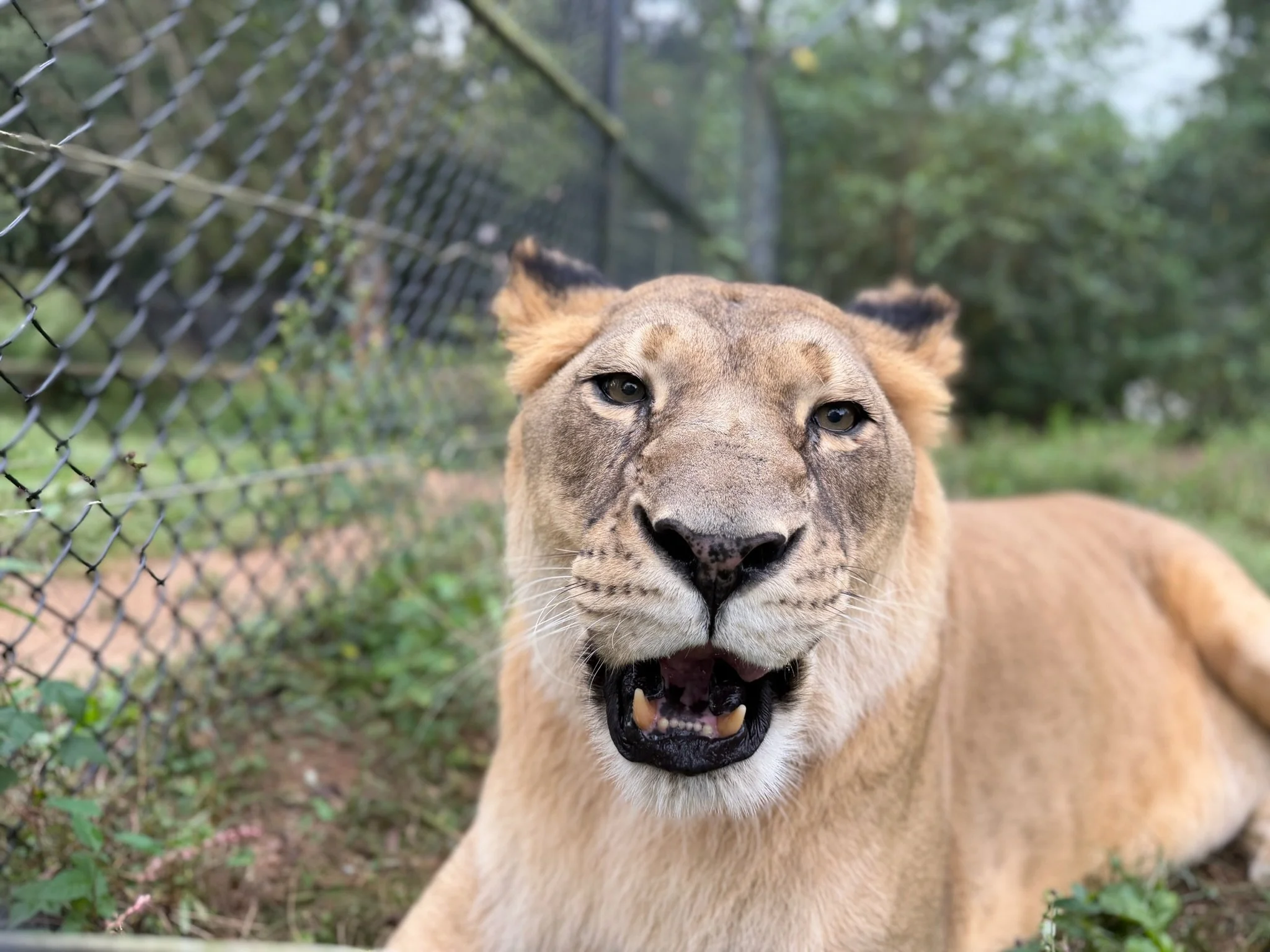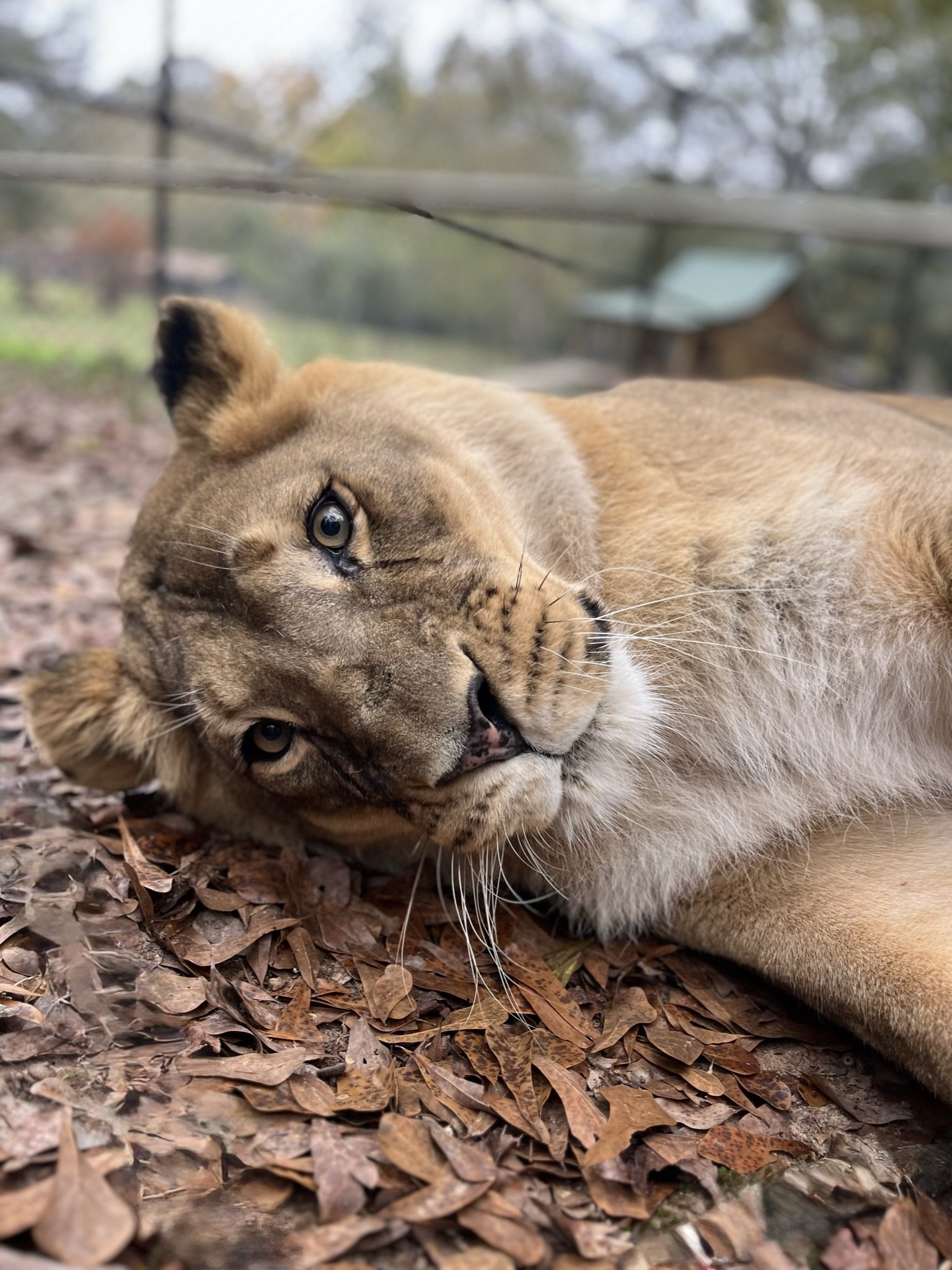African Lion
Scientific Name: Panthera Leo
Habitat: Savannas, grasslands, bush areas of Sub-Saharan Africa, and open woodlands
Diet: Carnivore
Weight: 265-420 lbs
Conservation Status: Vulnerable
Range: — various populations found throughout Africa, south of the Sahara
Lifespan: 12-16 years
Size: 4.5-10 ft long body, 26 - 35 inch long tails
Lions have yellow-gold short fur that covers their entire body, including the nose, with long tails that have longer fur covering the end of the tail. Lions have large, brown, almond-shaped cat eyes with a dark brown liner around their eyes. They also have white whiskers just like tigers. Only male lions have a large amount of fur that surrounds their head, called a mane. The mane is helpful for claiming territory, for dominance in hunting, and for attracting mates.
Lions live in prides, making them one of the most social predators in the world. Prides of lions can have up to 40 lions of all ages. Prides are very competitive for young cubs; new males that enter prides must run towards cubs and kill whoever cannot escape. Both male and female lions claim territory with vocalization. Male lions defend, and female lions hunt.
Females are available to mate for only a couple of days every year and typically give birth to a litter of one to four cubs every 2 years. Cubs nurse for 6 months and start eating meat at 3 months. The majority of cubs die within 2 years, with about 1 in 5 making it to adulthood.
Many lions are killed by pesticides from humans who use them to protect their livestock. Lions are killed by their fair share of poachers as well, who target the species for their bones and body parts that are profitable on the illegal wildlife trade. With increased loss of prey for lions, there is increased conflict between humans and lions, which is causing quicker declines in lion populations.


